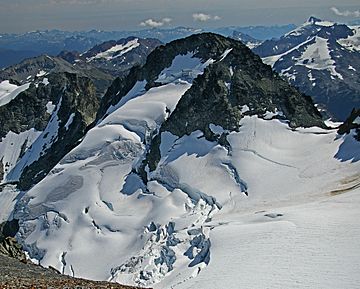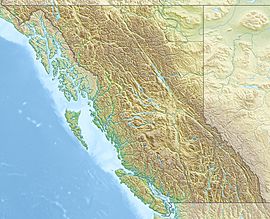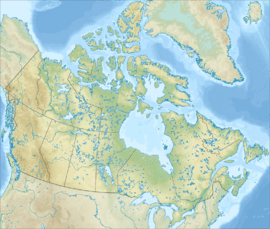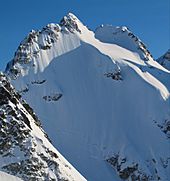Mount Fitzsimmons (British Columbia) facts for kids
Quick facts for kids Mount Fitzsimmons |
|
|---|---|

Mount Fitzsimmons and Fitzsimmons Glacier as seen from Overlord Mountain
|
|
| Highest point | |
| Elevation | 2,603 m (8,540 ft) |
| Prominence | 133 m (436 ft) |
| Parent peak | Overlord Mountain (2625 m) |
| Geography | |
| Location | Garibaldi Provincial Park British Columbia, Canada |
| Parent range | Fitzsimmons Range Garibaldi Ranges Coast Ranges |
| Topo map | NTS 92J2 |
| Climbing | |
| First ascent | 1924 by BCMC party |
| Easiest route | class 2-3 via Diavolo Glacier |
Mount Fitzsimmons is a tall, icy mountain in Garibaldi Provincial Park in British Columbia, Canada. It stands at 2,603 meters (about 8,540 feet) high. This mountain is part of the Coast Mountains and is the third-highest peak in the Fitzsimmons Range.
It's located about 15 kilometers (9 miles) southeast of Whistler. A nearby peak, Mount Benvolio, is slightly higher and sits to the west-southwest. Mount Fitzsimmons has two main glaciers: the Diavolo Glacier on its southeast side and the Fitzsimmons Glacier on its northwest side. Water from these glaciers and the mountain itself flows into streams that eventually join the Cheakamus River.
The first time people successfully climbed Mount Fitzsimmons was on August 19, 1924. A group from the British Columbia Mountaineering Club made this historic climb.
The mountain is named after James Fitzsimmons. He was a prospector who built a trail along Fitzsimmons Creek. He used this trail to carry supplies to a small copper mine he was working on. The name "Mount Fitzsimmons" became official on September 2, 1930, approved by the Geographical Names Board of Canada.
Mountain Weather
Mount Fitzsimmons is in a "marine west coast" climate zone. This means it gets a lot of rain and snow. Most weather systems come from the Pacific Ocean and move east towards the Coast Mountains. When they hit the mountains, the air is forced upwards, which makes it drop its moisture as rain or snow.
Because of this, the Coast Mountains get a lot of precipitation, especially heavy snowfall in winter. Temperatures can drop below −20 °C (which is −4 °F), and with the wind, it can feel even colder, below −30 °C (−22 °F). The best time to climb Mount Fitzsimmons is usually from July through September, when the weather is most favorable.
Climbing Paths
Here are some known climbing paths on Mount Fitzsimmons:




